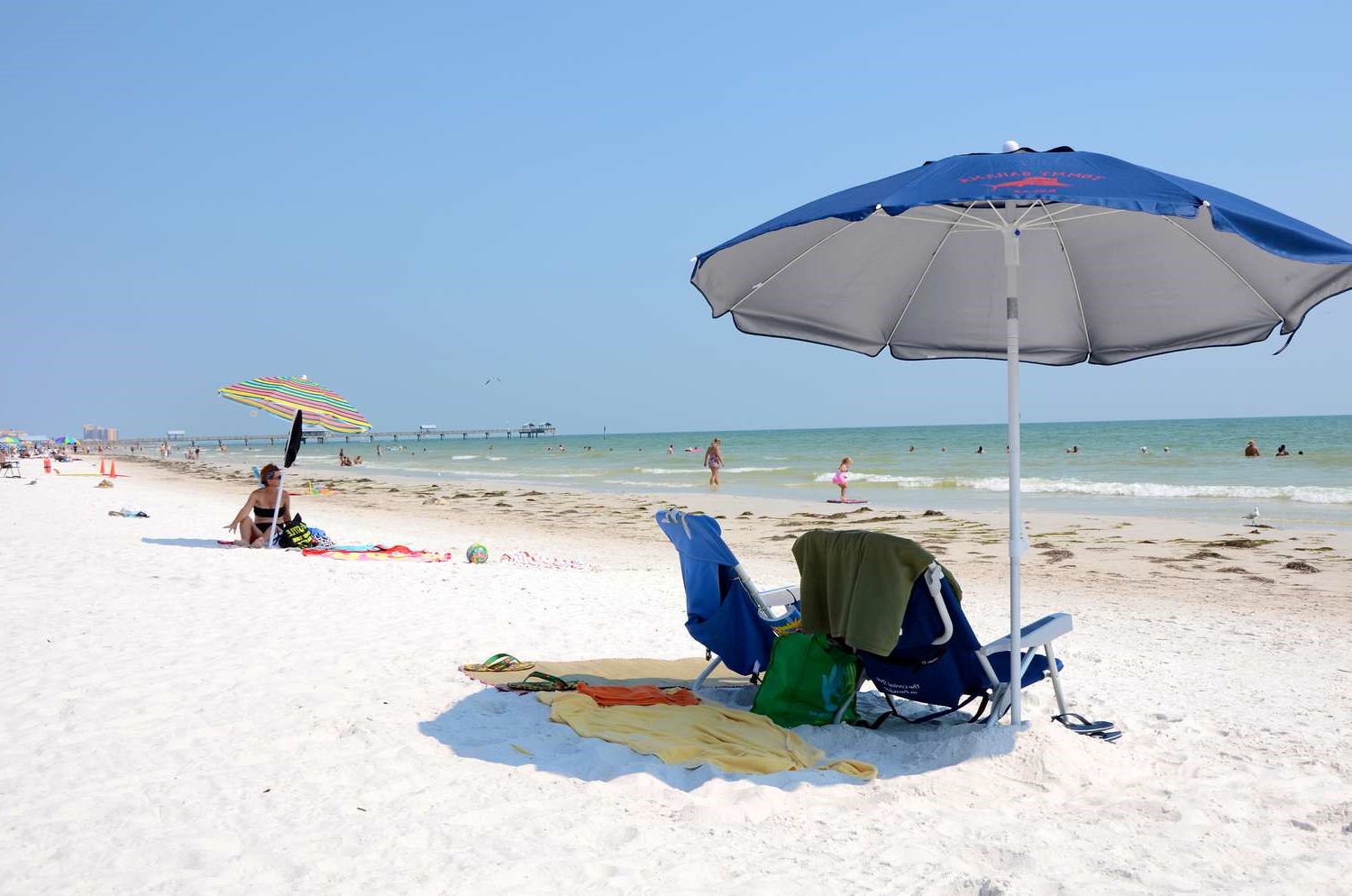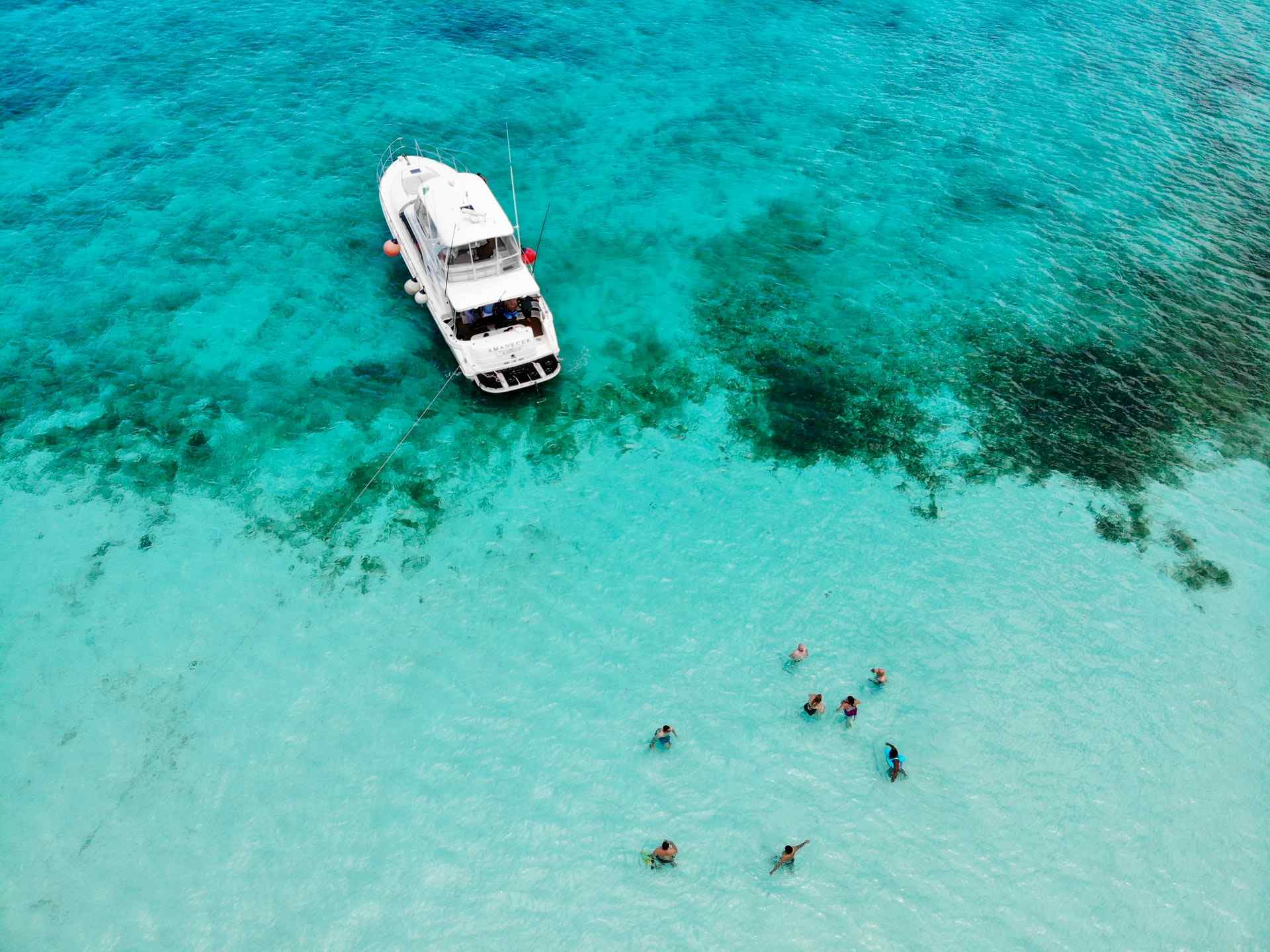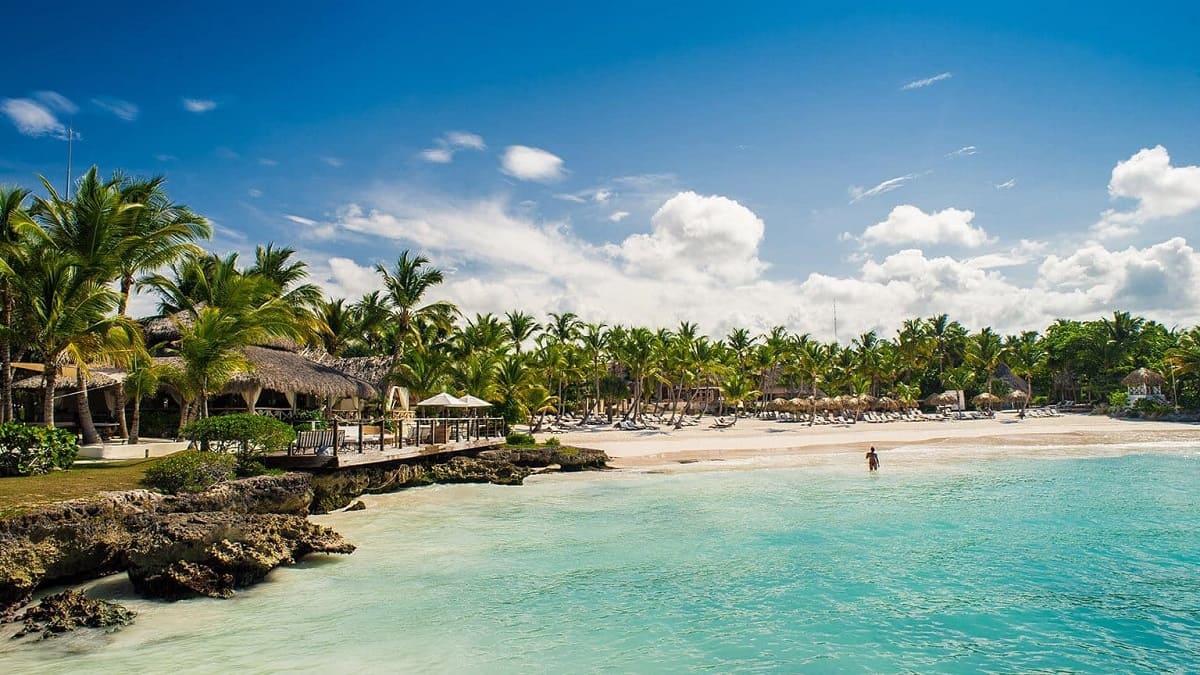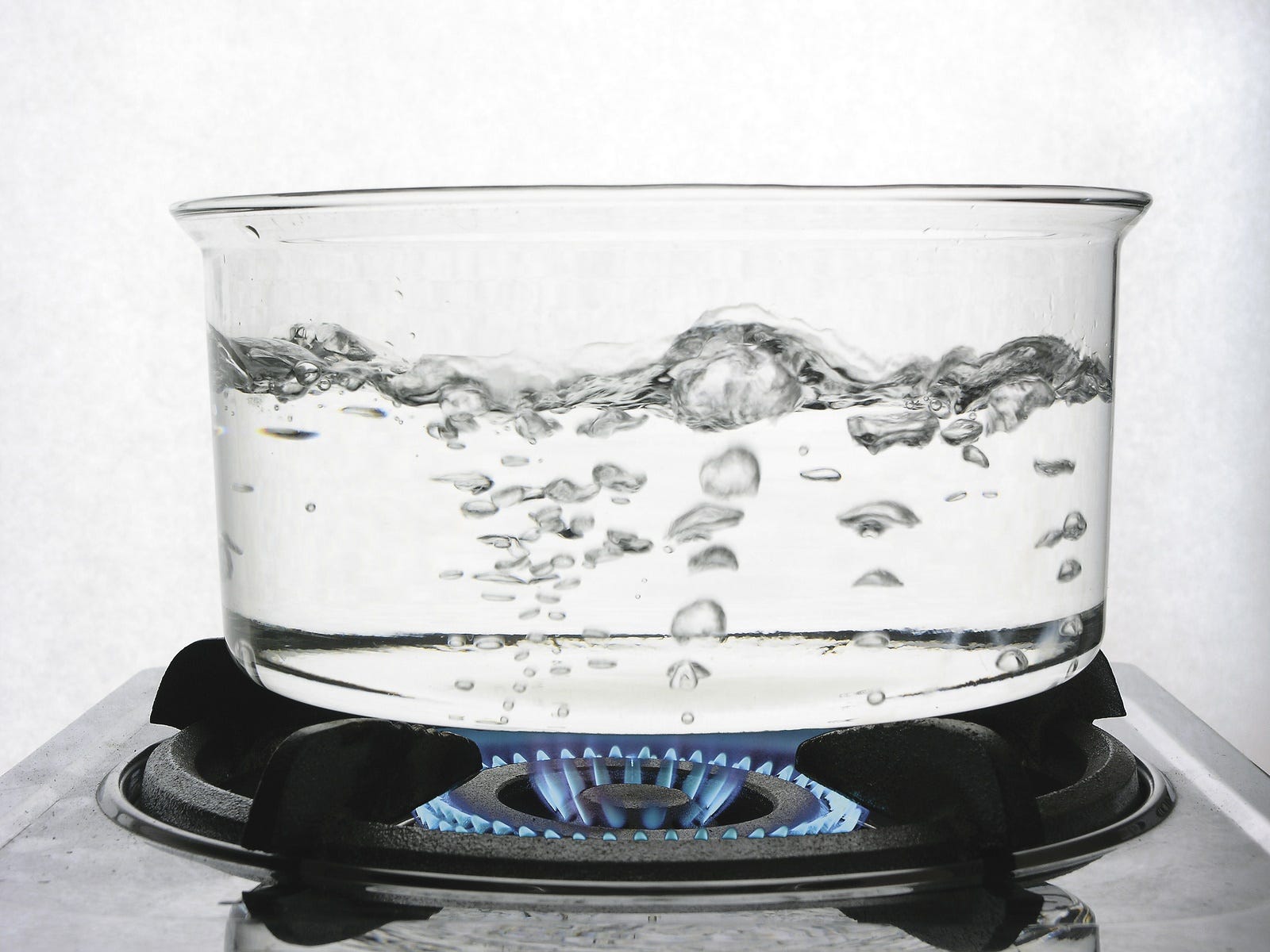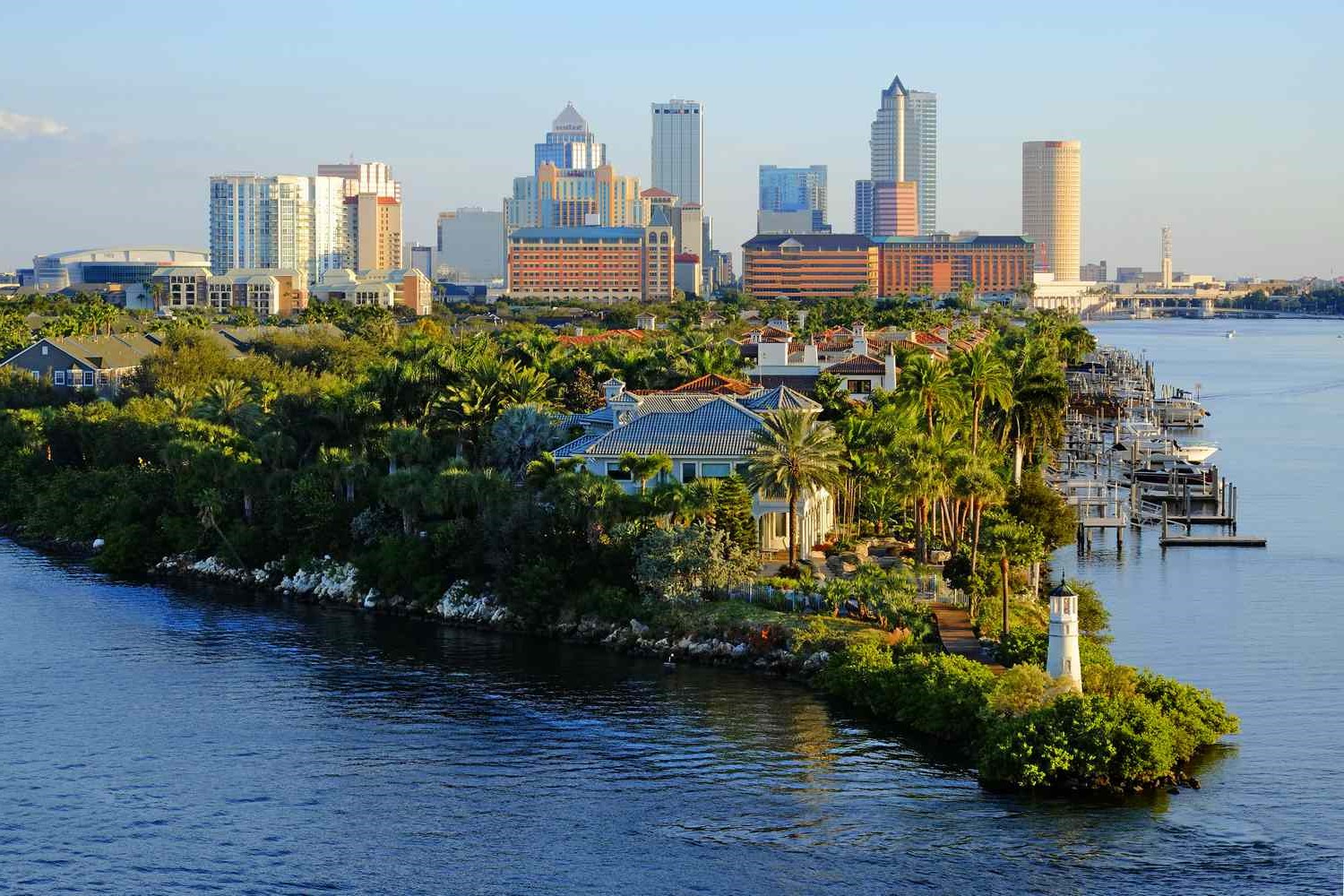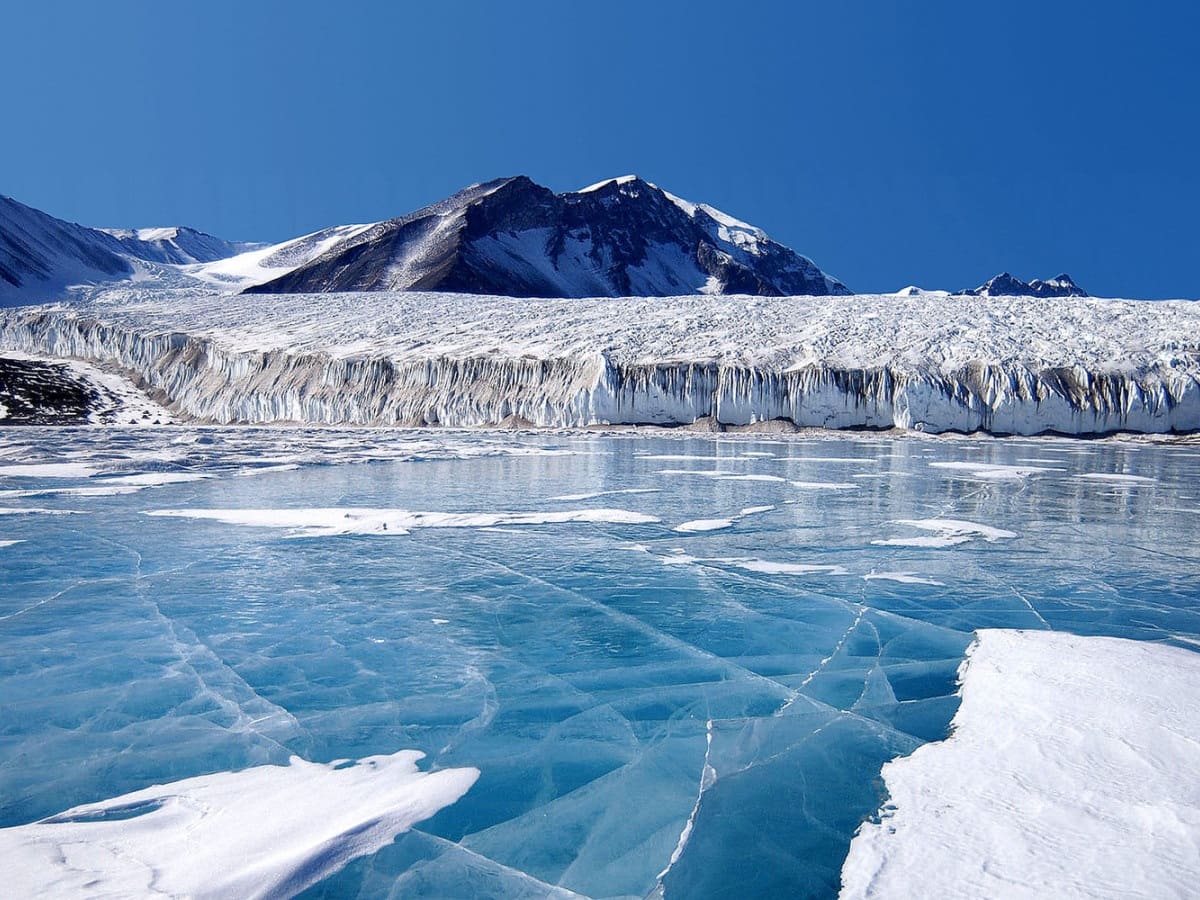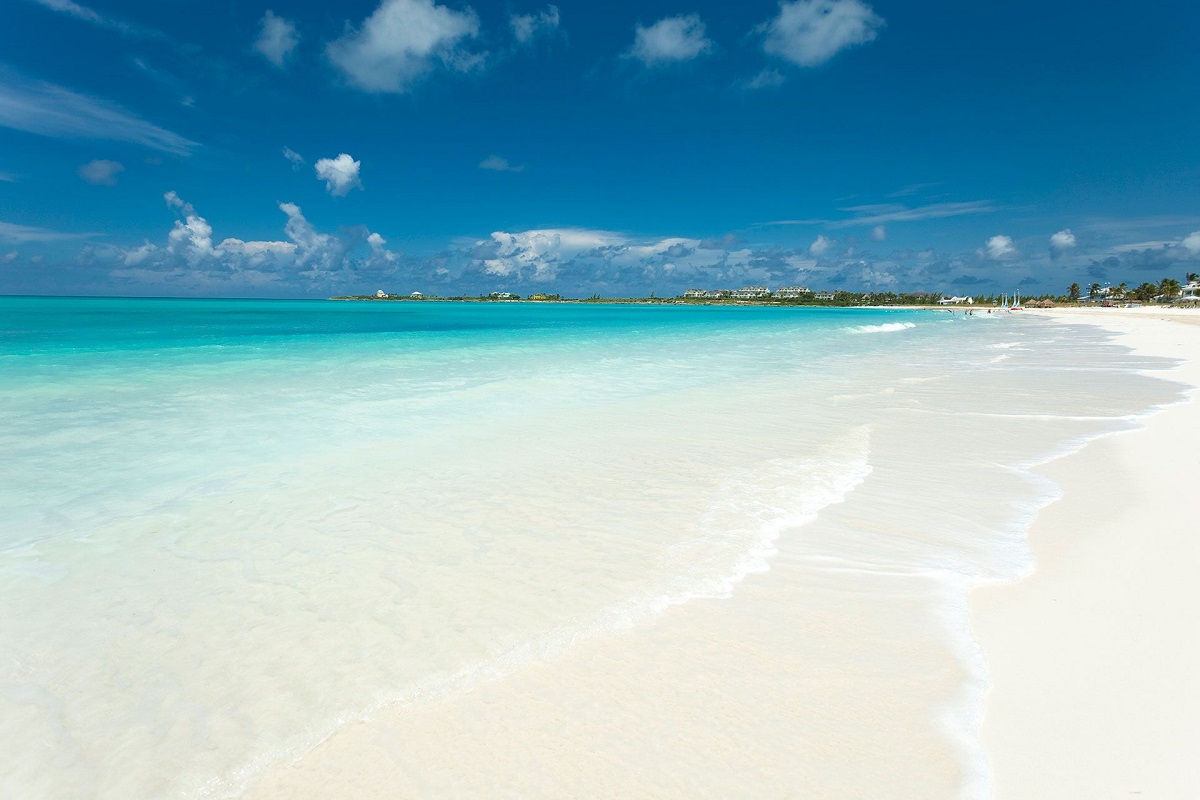Home>Weather and Climate>Tampa Water Temperature Guide
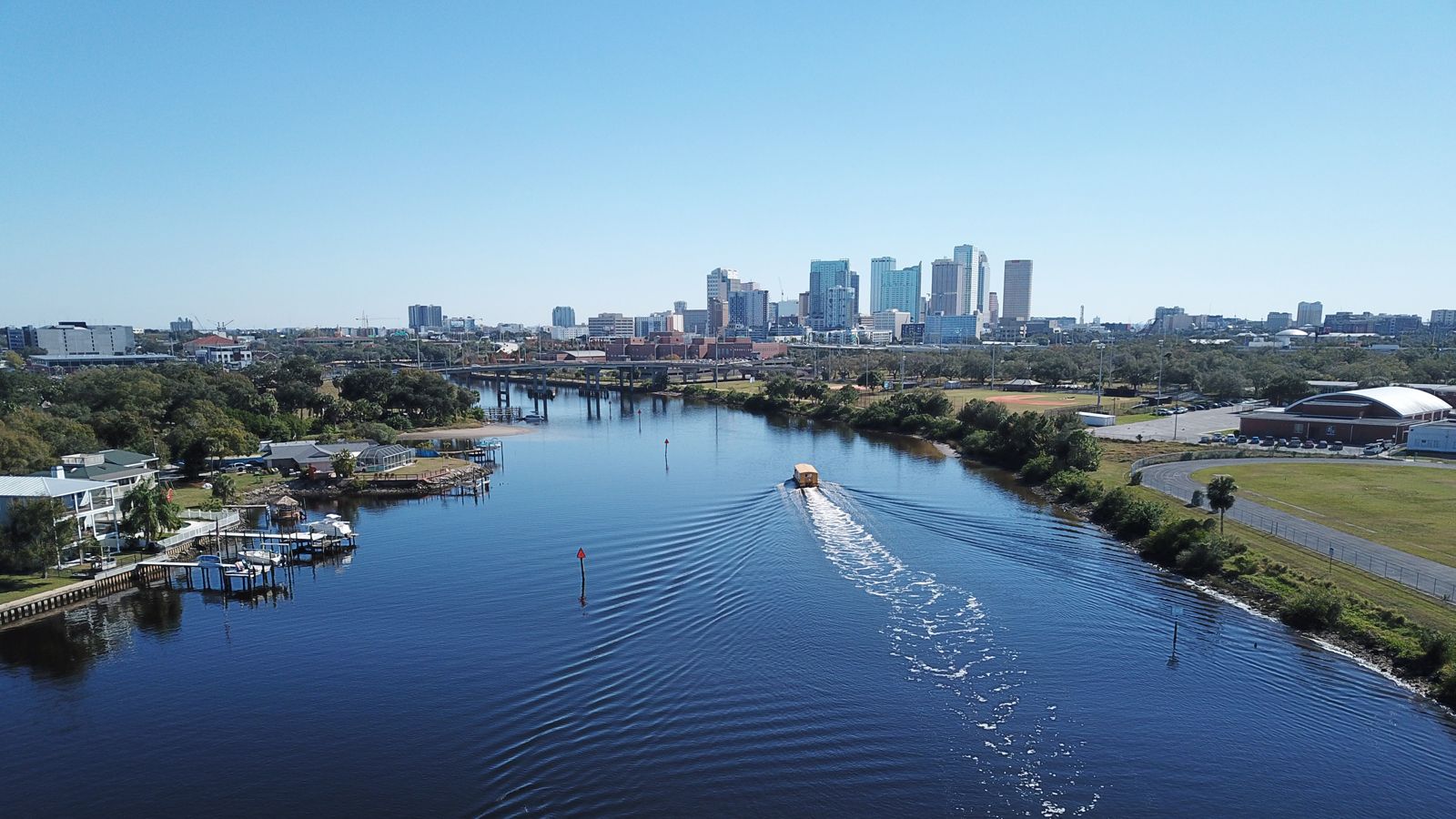

Weather and Climate
Tampa Water Temperature Guide
Published: March 3, 2024
Plan your trip to Tampa with our comprehensive water temperature guide. Discover the best time to visit and enjoy the ideal weather and climate for your activities.
(Many of the links in this article redirect to a specific reviewed product. Your purchase of these products through affiliate links helps to generate commission for Temperatures.com, at no extra cost. Learn more)
Table of Contents
Understanding Water Temperature
Water temperature plays a crucial role in shaping the environment of aquatic ecosystems and influencing various activities such as swimming, fishing, and marine life. Understanding the dynamics of water temperature is essential for making informed decisions about engaging in water-related activities. In the context of Tampa, Florida, the water temperature is a key factor that significantly impacts the local marine environment and recreational pursuits.
Water temperature refers to the degree of warmth or coldness of a body of water. It is a dynamic parameter that fluctuates throughout the year, responding to seasonal changes and environmental factors. In Tampa, the water temperature varies based on the time of year, weather patterns, and geographical location. The warm waters of Tampa Bay and the Gulf of Mexico experience distinct temperature ranges, influencing the region's climate and recreational opportunities.
The water temperature in Tampa typically ranges from around 60°F (15.5°C) in the winter months to approximately 90°F (32°C) during the peak of summer. These fluctuations have a profound impact on the local marine life, as well as the recreational activities enjoyed by residents and visitors alike. Understanding these temperature variations is crucial for ensuring the safety and enjoyment of water-based pursuits.
Moreover, water temperature directly affects the behavior and distribution of marine species. Certain fish and marine organisms thrive in specific temperature ranges, influencing their migration patterns and feeding habits. For instance, warmer waters may attract tropical species, while cooler temperatures can favor the presence of cold-water fish. Understanding these temperature preferences is essential for anglers and marine enthusiasts seeking to optimize their fishing and wildlife observation experiences in Tampa's waters.
In addition to its influence on marine life, water temperature significantly impacts recreational activities such as swimming, boating, and water sports. The comfort and safety of swimmers and water sports enthusiasts are closely tied to the temperature of the water. Warmer temperatures are conducive to leisurely swims and water-based activities, while cooler waters may require additional precautions to ensure a pleasant experience.
In summary, comprehending the nuances of water temperature is vital for anyone engaging with aquatic environments, whether for leisure, sports, or ecological observation. By recognizing the seasonal variations and the impact of temperature on marine life and recreational activities, individuals can make informed decisions and fully appreciate the dynamic nature of Tampa's aquatic ecosystems.
Read more: Monthly Average Temperatures In Tampa
Factors Affecting Tampa Water Temperature
The water temperature in Tampa, Florida, is influenced by a myriad of factors that collectively shape the aquatic environment throughout the year. Understanding these factors is essential for gaining insight into the dynamic nature of Tampa's water temperature and its implications for marine life and recreational activities.
-
Seasonal Variations: Tampa experiences distinct seasonal changes, with summer bringing warm temperatures and winter ushering in cooler conditions. These seasonal shifts directly impact the water temperature, leading to noticeable fluctuations in the region's aquatic ecosystems. During the summer months, the water temperature in Tampa Bay and the Gulf of Mexico tends to rise, creating ideal conditions for swimming and water sports. Conversely, the winter season brings cooler waters, influencing the behavior and distribution of marine species.
-
Weather Patterns: The weather exerts a significant influence on water temperature. Factors such as sunlight, cloud cover, and precipitation play a role in regulating the heat absorbed by the water. Sunny days can contribute to the warming of Tampa's waters, while cloudier or rainy weather may have a cooling effect. Additionally, tropical storms and hurricanes can disrupt the normal temperature patterns, leading to rapid fluctuations and temporary disturbances in the aquatic environment.
-
Ocean Currents: The movement of ocean currents has a profound impact on water temperature. In the case of Tampa, the Gulf Stream and Loop Current are influential forces that can transport warm or cool water into the region. These currents contribute to the overall temperature dynamics, influencing the seasonal variations and creating unique thermal conditions that shape the local marine environment.
-
Tidal Effects: Tides play a role in modulating water temperature, particularly in coastal areas. The ebb and flow of tides can affect the mixing of warmer and cooler waters, leading to localized temperature changes along the shoreline. In Tampa, the interplay between tides and water temperature contributes to the dynamic nature of the coastal waters, influencing the experiences of beachgoers, anglers, and marine enthusiasts.
-
Human Activities: Human interventions and activities can also impact water temperature. Urban development, industrial processes, and agricultural practices can introduce heat or pollutants into water bodies, affecting their thermal characteristics. Additionally, the construction of infrastructure such as bridges and causeways can alter the natural flow and temperature distribution of water in Tampa's aquatic ecosystems.
By considering these multifaceted factors, it becomes evident that Tampa's water temperature is subject to a complex interplay of natural and anthropogenic influences. The convergence of seasonal changes, weather patterns, ocean currents, tides, and human activities collectively shapes the thermal dynamics of Tampa's aquatic environments, underscoring the intricate relationship between these factors and the region's water temperature.
Best Times for Swimming in Tampa
The optimal times for swimming in Tampa are closely tied to the seasonal variations in water temperature. During the summer months, typically from late spring to early fall, Tampa experiences warm water temperatures that create ideal conditions for swimming and water-based activities. The warm waters of Tampa Bay and the Gulf of Mexico beckon swimmers and beach enthusiasts, offering a refreshing escape from the heat and a chance to revel in the region's aquatic splendor.
In the peak of summer, which spans from June to August, the water temperature in Tampa reaches its highest levels, often exceeding 80°F (26.7°C) and occasionally climbing to around 90°F (32°C). These balmy waters provide a welcoming environment for swimmers seeking to cool off and enjoy the rejuvenating embrace of the sea. The warm temperatures during this period make swimming a delightful and invigorating experience, drawing locals and tourists alike to the region's beaches and coastal areas.
Moreover, the extended daylight hours and generally favorable weather conditions further enhance the appeal of swimming in Tampa during the summer. With ample sunshine and minimal rainfall, swimmers can bask in the warmth of the sun and relish the crystal-clear waters, creating cherished memories against the backdrop of Tampa's stunning coastal landscapes.
While summer stands out as the prime season for swimming in Tampa, early spring and late fall also offer favorable conditions for aquatic pursuits. During these transitional periods, the water temperature remains relatively mild, ranging from 70°F to 80°F (21°C to 27°C), providing comfortable swimming conditions for enthusiasts looking to enjoy the water without the intense heat of summer.
Conversely, the winter months, spanning from December to February, bring cooler water temperatures to Tampa's coastal areas. While the water temperature can dip to around 60°F (15.5°C) during this time, dedicated swimmers and cold-water enthusiasts may still find opportunities to partake in invigorating swims, especially on milder days when the sun graces the region with its warmth.
In essence, the best times for swimming in Tampa align with the warmer months, particularly from late spring to early fall, when the water temperature is most inviting and conducive to aquatic activities. Whether it's the peak of summer or the transitional periods of spring and fall, Tampa offers a diverse range of opportunities for swimmers to immerse themselves in the region's enchanting waters, creating unforgettable experiences and fostering a deep appreciation for the natural beauty of Florida's Gulf Coast.
Fishing and Water Sports in Relation to Water Temperature
The water temperature in Tampa, Florida, exerts a profound influence on fishing and water sports, shaping the experiences of anglers, boaters, and water sports enthusiasts throughout the year. Understanding the relationship between water temperature and these activities is essential for optimizing recreational pursuits and appreciating the dynamic nature of Tampa's aquatic environments.
Fishing:
Water temperature plays a pivotal role in determining the behavior and distribution of fish species, directly impacting the success of fishing endeavors. In Tampa, the seasonal fluctuations in water temperature influence the movements and feeding patterns of various fish, presenting anglers with unique opportunities to target different species based on their thermal preferences.
During the warmer months, when the water temperature rises, anglers may encounter a diverse array of fish species that thrive in the balmy waters of Tampa Bay and the Gulf of Mexico. Species such as snook, tarpon, and redfish are known to be more active in warmer temperatures, making them prime targets for anglers seeking exhilarating fishing experiences. The higher water temperatures also contribute to increased metabolic rates in fish, leading to heightened feeding activity and greater angling prospects.
Conversely, as the water temperature cools during the winter months, certain cold-water fish species become more prevalent in Tampa's coastal waters. Species such as sheepshead, black drum, and speckled trout are known to favor cooler temperatures, presenting anglers with alternative fishing opportunities during the cooler season. Understanding these temperature-driven shifts in fish behavior enables anglers to adapt their strategies and target species that are most responsive to the prevailing thermal conditions.
Furthermore, the interplay between water temperature and fishing extends beyond seasonal variations, encompassing daily temperature fluctuations and localized thermal gradients. In Tampa's diverse aquatic ecosystems, factors such as shallow flats, deep channels, and coastal structures can create microclimates that influence water temperature, impacting the distribution and behavior of fish in specific areas. Anglers adept at recognizing these temperature nuances can strategically position themselves to capitalize on the thermal preferences of various fish species, enhancing their fishing success and enriching their angling experiences.
Read more: Monthly Destin Water Temperature Guide
Water Sports:
In the realm of water sports, the water temperature serves as a crucial determinant of comfort, safety, and performance for enthusiasts engaged in activities such as boating, kayaking, and paddleboarding. The seasonal variations in water temperature directly influence the appeal and feasibility of these water-based pursuits, guiding enthusiasts in selecting the most suitable times and locations for their activities.
During the warmer months, when the water temperature in Tampa reaches its peak, water sports enthusiasts are presented with optimal conditions for engaging in their chosen activities. The inviting warmth of the water enhances the overall experience, allowing boaters and paddlers to revel in the pleasures of the sea while basking in the comfort of the temperate waters. Additionally, the higher water temperatures contribute to improved muscle function and flexibility, enhancing the performance and enjoyment of water sports activities.
Conversely, as the water temperature cools during the winter months, water sports enthusiasts may need to adapt their approaches and equipment to accommodate the cooler conditions. Wetsuits and appropriate thermal gear become essential for maintaining comfort and safety in the cooler waters, enabling enthusiasts to continue pursuing their passions while mitigating the effects of lower temperatures. Furthermore, the seasonal shifts in water temperature may influence the choice of water sports activities, with certain pursuits being more conducive to cooler temperatures, such as winter kayaking or paddleboarding.
In summary, the relationship between water temperature and fishing, as well as water sports, is a dynamic and multifaceted interplay that significantly shapes the experiences of anglers and water sports enthusiasts in Tampa. By recognizing the impact of water temperature on fish behavior, angling strategies, and the feasibility of water sports activities, individuals can make informed decisions and maximize their enjoyment of Tampa's diverse aquatic offerings. Whether it's the thrill of angling in warm waters or the adaptability required for winter water sports, the influence of water temperature underscores the rich tapestry of recreational opportunities available in Tampa's coastal paradise.
Importance of Monitoring Water Temperature for Marine Life
Monitoring water temperature is of paramount importance for the well-being and survival of marine life in Tampa's diverse aquatic ecosystems. The temperature of the water directly impacts the physiological processes, behavior, and distribution of marine species, exerting a profound influence on the delicate balance of the marine environment.
Maintaining an optimal water temperature is crucial for the health and reproductive success of marine organisms. Many species of fish, invertebrates, and marine mammals exhibit specific temperature preferences that are integral to their life cycles. Deviations from their preferred temperature ranges can disrupt essential biological functions, including metabolism, growth, and reproduction. By monitoring water temperature, researchers and conservationists can gain valuable insights into the thermal requirements of various species, enabling them to implement targeted conservation measures and habitat management strategies to support the diverse marine life in Tampa's waters.
Furthermore, fluctuations in water temperature can trigger ecological responses that ripple through the marine food web. Changes in temperature can influence the abundance and distribution of plankton, the foundational organisms at the base of the marine food chain. This, in turn, can impact the availability of food for higher trophic levels, including fish, seabirds, and marine mammals. By closely monitoring water temperature, scientists can anticipate and assess the ecological consequences of temperature variations, contributing to a deeper understanding of the complex interactions within Tampa's marine ecosystems.
In addition to its ecological implications, monitoring water temperature is essential for identifying and addressing potential stressors and threats to marine life. Elevated water temperatures, often associated with phenomena such as marine heatwaves, can lead to coral bleaching, harmful algal blooms, and the disruption of critical habitats. By actively monitoring water temperature, conservationists and resource managers can detect early warning signs of thermal stress and implement proactive measures to mitigate the impacts on vulnerable marine species and ecosystems.
Moreover, understanding the thermal dynamics of Tampa's waters is instrumental in assessing the effects of climate change on marine life. Rising global temperatures and ocean warming trends can have far-reaching consequences for marine ecosystems, influencing species distributions, migration patterns, and the prevalence of tropical and subtropical species in temperate regions. By systematically monitoring water temperature and its long-term trends, scientists can contribute to the ongoing assessment of climate change impacts on Tampa's marine biodiversity, informing conservation efforts and adaptive management strategies.
In essence, the importance of monitoring water temperature for marine life cannot be overstated. By diligently tracking and analyzing temperature data, researchers, conservationists, and resource managers can safeguard the ecological integrity of Tampa's marine environments, support the conservation of diverse marine species, and contribute to the resilience of the region's coastal ecosystems in the face of environmental challenges.

